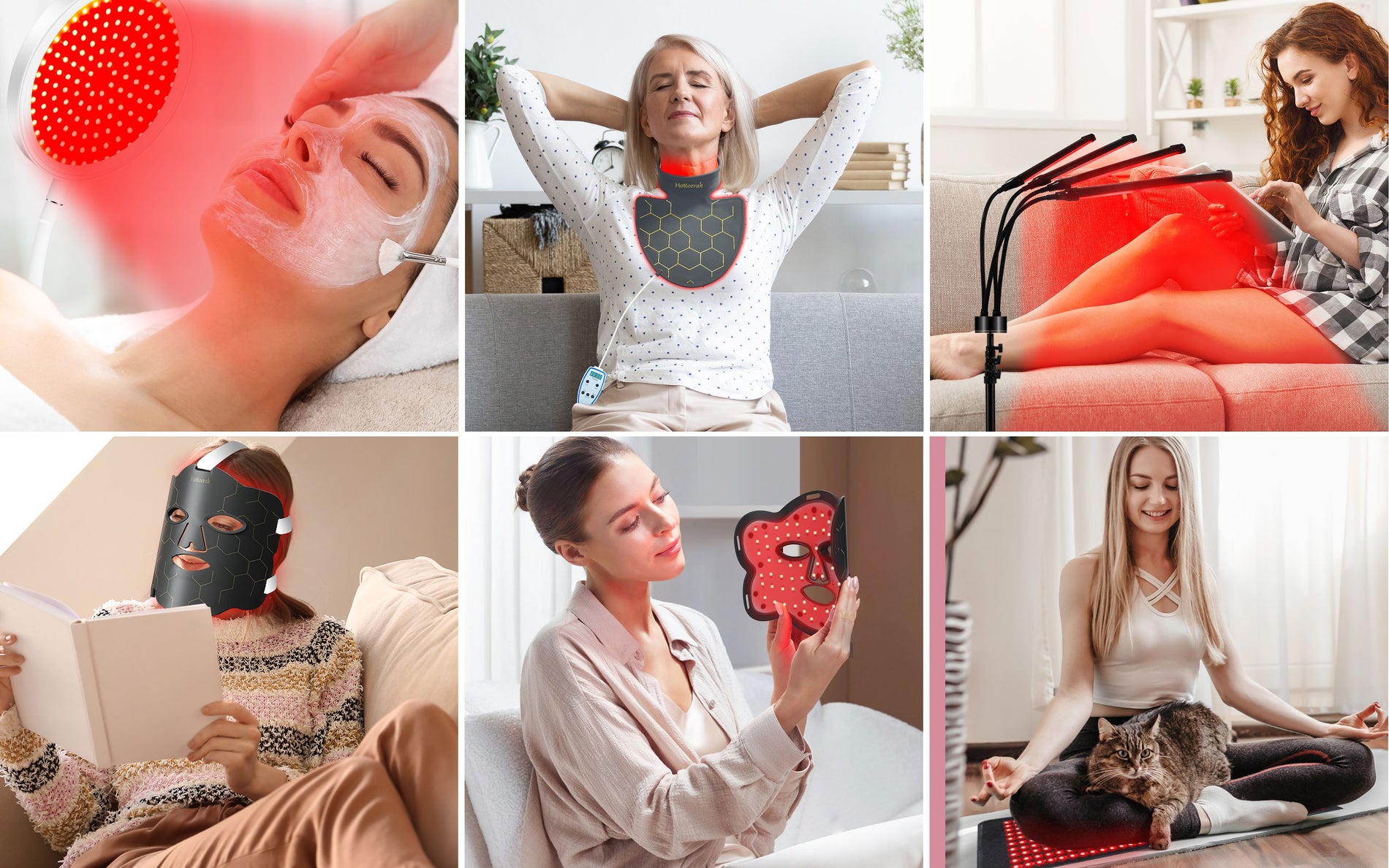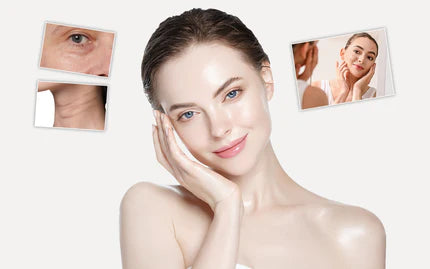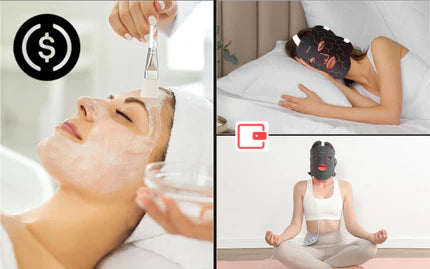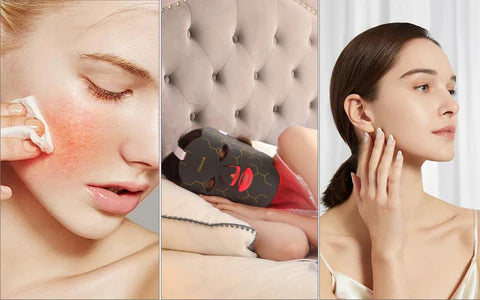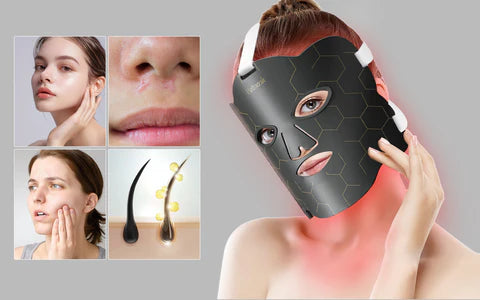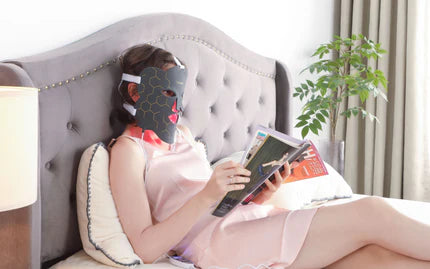Acne is a common skin problem that many people deal with, and it can seriously affect someone’s confidence and how they feel about themselves. That’s where red light therapy (RLT) comes in. It’s a treatment that uses light to help improve skin condition, and it has shown promise in treating acne and reducing skin inflammation. RLT treatments are available in various forms, from handheld devices to professional-grade panels, with red light therapy masks gaining popularity for their ease of use at home. In this article, we’ll explain how red light therapy works, discuss its benefits for acne, and offer tips on how you can use it to help manage acne and achieve clearer skin.
Why Do We Get Acne and How Does It Work?
Acne is a pesky skin issue that doesn’t discriminate by age–both teens and adults can get it. So what’s behind those annoying breakouts? Basically, acne pops up when our pores get blocked with oil, dead skin cells, or sometimes bacteria. This blockage can lead to different types of blemishes, like blackheads and whiteheads, or red, sore pimples.
Inflammation has a big role in acne. If the skin gets irritated, it reacts by becoming inflamed, which often makes the acne worse. Certain things make some people’s skin more likely to get inflamed. These can be stuff like genes, stress, diet, or even the skincare products you use.
So where does red light therapy (RLT) come in? It’s a treatment that can help speed up how our skin heals. RLT's rejuvenating effects stem from its ability to reduce inflammation and help balance oil levels, both of which are key for tackling acne.

The Benefits of Red Light Therapy for Acne and Inflammation
- Reduces Inflammation: One of the hallmark benefits of RLT is its ability to calm inflammation. Since inflammation is a big contributor to acne—especially those painful, swollen pimples—reducing it can visibly improve your skin’s appearance. Research shows that RLT helps decrease the production of cytokines, which are inflammatory substances in the body. By controlling these, red light therapy mask not only soothes the skin but also makes breakouts less severe and less frequent.
- Controls Oil Production: Overactive sebaceous glands, which produce your skin’s oil, can exacerbate acne. Studies suggest that RLT may help normalize oil production by influencing the cells that regulate sebum. Less oil means fewer clogged pores and, consequently, fewer breakouts.
- Promotes Skin Healing: Perhaps one of the most appreciated effects of RLT is its ability to enhance the skin’s natural healing process. This means quicker recovery from acne flare-ups, minimizing the chances of scarring. The light encourages tissue repair, which can lead to healthier-looking skin overall.
- Diminishes Scarring: For those who have existing acne scars, RLT might offer some hope too. The therapy promotes collagen production, essential for skin regeneration. More collagen can lead to smoother skin texture and a reduction in the visibility of acne scars over time.
Through regular sessions, many users of RLT have reported not just clearer but also more radiant, healthier-looking skin, suggesting its potential anti-aging benefits. It’s not an overnight miracle, but with consistency, the results can be quite impressive.

Who Should Consider Red Light Therapy for Acne and Inflammation?
Red light therapy (RLT) can be a beneficial treatment for a broad spectrum of individuals struggling with acne and inflammation. But did you know that red light is just one color in a spectrum of wavelengths that can benefit the skin? A 7 color therapy mask for example, incorporates a broader range of light, allowing you to target multiple skin concerns at once. If you find yourself among the following categories, RLT might be worth considering as part of your skincare strategy:
- Persistent Adult Acne Sufferers: Adults who continue to experience acne beyond their teenage years, often due to stress, hormonal changes, or environmental factors, may find relief with RLT. It’s gentle enough for mature skin and can help address acne without the harshness of some chemical treatments.
- Teenagers with Moderate Acne: Teens facing the challenges of hormonal acne could benefit from RLT. Since it doesn’t rely on pharmaceuticals, it can be an attractive option for those looking for alternative treatments that have minimal side effects.
- Individuals with Sensitive Skin: For people whose skin reacts negatively to standard acne treatments, which can sometimes include irritating ingredients, RLT offers a non-chemical, low-risk alternative that is generally well-tolerated by sensitive skin types.
- Those with Inflammatory Acne: People dealing with inflammatory acne – characterized by red, swollen pimples – might find RLT particularly helpful because of its anti-inflammatory properties.
- Patients Seeking Adjunctive Treatments: Individuals already using other acne treatments, whether topical or oral, may add RLT to enhance their overall results, as long as it is done under the guidance of a dermatologist.
- Anyone Interested in Preventative Care: Even if you’re not currently experiencing severe acne or inflammation, RLT can be used as a preventative measure to maintain skin health, helping to prevent future breakouts and supporting overall skin healing.
It’s important to note that while RLT is safe for many people, those with certain medical conditions, particularly those related to light sensitivity, should consult a healthcare provider before starting.
How to Fight Acne and Soothe Inflammation with Red Light Therapy
Introducing red light mask as a part of your skincare routine can be particularly beneficial if you’re looking to target acne and soothe inflammation. Here’s how to blend face mask red light effectively into your regimen for clearer, calmer skin:
- Prep Your Skin: Start with a clean slate. Gently washing your face to remove impurities ensures that the red light reaches the deeper layers of your skin without obstacles. This step is crucial, especially when tackling acne-prone skin, which benefits from being free of excess oil and debris.
- Incorporate Exfoliation: A light exfoliation can work wonders before an RLT session. It helps clear away dead skin cells that might hinder light absorption. However, choose non-abrasive exfoliants designed for sensitive or acne-prone skin to avoid triggering more irritation.
- Optimize with Post-red mask Care: After using mask, apply products that support acne treatment and skin repair. Serums and moisturizers with hyaluronic acid can provide much-needed hydration without clogging pores. Ingredients like niacinamide not only moisturize but also have anti-inflammatory properties that complement the soothing effects of red mask.
- Customize Frequency and Duration: Listen to your skin when deciding how often and how long to use RLT. If you’re dealing with active breakouts and inflammation, you might start with short, gentle sessions every other day, observing how your skin reacts, and adjusting accordingly.
- Mindfully Combine Other Acne Treatments: Be cautious when mixing RLT with other acne-fighting products, especially those that can cause sensitivity, such as benzoyl peroxide or salicylic acid. It’s best to separate the application of these products from your RLT sessions or to use them on alternate days. For personalized advice, especially regarding prescription treatments like retinoids, consult with a dermatologist.
- Monitor and Adjust: Keeping an eye on changes in your skin condition will help you tweak your routine for the best results. If inflammation decreases and acne lesions heal, it’s a sign that your approach is working. On the flip side, any worsening should prompt a reassessment of your strategy.
By carefully weaving red mask into your skincare regime with these tailored steps, you can leverage its benefits to specifically combat acne and reduce inflammation. The process requires a balance between consistent care and adaptability to your skin’s needs and responses.
Final Thoughts
If you’re considering RLT or any new therapy, it’s natural to feel a mix of excitement and uncertainty. The promising benefits of RLT, backed by scientific research and personal success stories, highlight its potential as a valuable addition to your health and skincare regimen. However, embracing RLT—or any treatment—requires a balanced approach. Listen to your body, be informed, and seek professional guidance when needed.
Addressing Common Concerns: FAQs About Red Light Therapy
Q1: Is red light therapy safe?
Yes, RLT is generally considered safe when used appropriately. It does not contain UV rays, which are harmful to the skin, making it a safer alternative to other types of light therapy. However, it’s always a good idea to use the therapy according to manufacturer instructions and consult with a healthcare provider if you have pre-existing conditions.
Q2: How long before I see results from RLT?
Results can vary depending on your skin type and the severity of the issues being treated. Many users start to see improvements in their skin condition within a few weeks, but it can take longer. Consistent treatment is key, so patience and regular use are essential.
Q3: Are there any side effects of using RLT?
The side effects of RLT are minimal but can include temporary redness or irritation, particularly for those with very sensitive skin. It’s rare, but some people might experience changes in pigmentation or photosensitivity. Understanding the full range of red light therapy promises and precautions is essential before beginning any new treatment. Testing the therapy on a small area of your skin before a full treatment can help gauge how your skin reacts.
